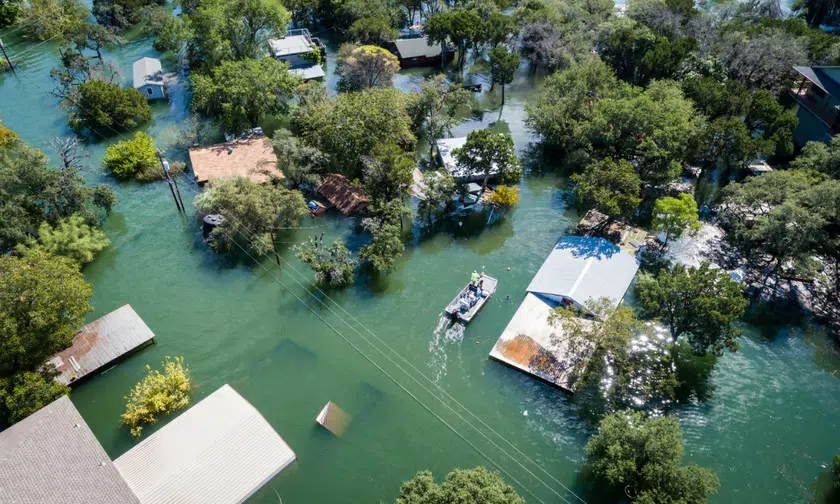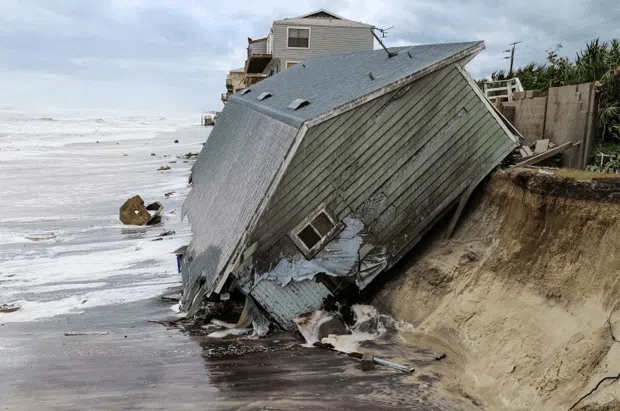
At least five large U.S. property insurers — including Allstate, American Family, Nationwide, Erie Insurance Group and Berkshire Hathaway — have told regulators that extreme weather patterns caused by climate change have led them to stop writing insurance coverages in some regions, exclude protections from various weather events and raise monthly premiums and deductibles, according to The Washington Post.
Major insurers say they will cut out damage caused by hurricanes, wind and hail from policies underwriting property along coastlines and in wildfire country.
Insurance providers are also more willing to drop existing policies in some locales as they become more vulnerable to natural disasters. Most home insurance coverages are annual terms, so providers are not bound to them for more than one year.
That means individuals and families in places once considered safe from natural catastrophes could lose crucial insurance protections while their natural disaster exposure expands or intensifies as global temperatures rise.

Initial estimates for insurance industry losses from Hurricane Idalia, which made landfall in Florida as a major Category 3 storm, are lower than previously feared and point to insured losses of less than $10 bn.
So far, there’s been a range of early estimates for insured losses from Hurricane Idalia, ranging from as low as $3 billion to around the $9 billion mark.
The Big Bend area of the Florida coast where Idalia made landfall is far less densely populated than the region devastated by Hurricane Ian last year. In contrast to Hurricane Idalia, there were approximately 1 million people within 30 miles of landfall for Ian, while there were about 38,000 people within that distance for Idalia, according to an AccurateWeather report.

According to Beinsure Data, H1 2023 is a continuation of the recent run of years with high losses from natural disaster. While the overall losses of $110bn were lower than those in H1 2022 ($120bn), they were still well above the average for the last ten years ($98bn, inflation-adjusted). The insured losses has decreased from $47bn to $43bn (10-year average for half-year losses: $34bn).
Most natural disaster databases show a significant decline in the number of annual global events prior to 1980. While the biggest disaster events are typically captured and are the most important to explain total losses most small and medium-sized events are often missed, according to Beinsure Natural Disaster Trends.
- Overall losses of $110bn – above the 10-year average
- Insured losses according to provisional estimates amount to $43bn, also much higher than the 10-year average
- Devastating earthquake in Turkey and Syria responsible for highest overall losses
- Series of extreme thunderstorms, including tornadoes and hail, in the USA account for roughly one third of overall global losses
- Climate change and El Niño drive record temperatures
JP Morgan have estimated that total natural catastrophe insured losses in Q1 2023 so far are in the region of $6-8 bn. Looking at the last 10 years, the average industry loss for Q1 is around $13.5bn which, adjusting for inflation, is probably close to $15bn for 2023.

Material changes in retentions by the primary insurers should mean that a higher proportion of losses end up with the primary insurers rather than the reinsurers.
More targeted hurricane risk mitigation actions are being finalized and will start by year-end 2023
The companies mentioned those policy changes as part of previously unreported responses to the regulatory group’s survey.
The survey was distributed in 2022 by 15 states and received responses — some sent as recently as last month — from companies covering 80% of the U.S. insurance market.
U.S. homeowners have faced unprecedented disasters in recent weeks that have underscored the new challenges facing insurance markets.
Hurricane Idalia brought severe flooding to Georgia and the Carolinas, and tore through parts of Florida that had never experienced direct hits from a major storm. Tropical Storm Hilary caused $600 million in damage on the West Coast.
The intensity and spread of inflation is sending insurance claims costs soaring. Strong rate hardening in US commercial property insurance lines and acceleration in personal lines rates support topline growth, but higher claims severity is eroding the profitability benefit.
Given the declining investment yields of the past decade, US property and casualty insurers’ investment allocations during this period have shifted to more riskier assets such as lower-rated and private placement bonds.
According to AM Best, that bonds remain the foundation of P&C insurers’ investment portfolios, but allocations have been declining.

 by
by 


